#Governor General of Canada
Explore tagged Tumblr posts
Text

Happy 60th Anniversary, Maple Leaf Flag!
#O CANADA#Flag Day#Flag Day 2025#National Flag of Canada#60th Anniversary#Canada Flag Day#Canada Flag Day 2025#Canada Flag Day 60#Canada Flag Day 60th Anniversary#Charles III#King of Canada#Mary Simon#Her Excellency The Right Honourable Mary Simon#Governor General Mary Simon#Governor-General Mary Simon#Vicereine#Vicereine of Canada#Governor General of Canada#Governor-General of Canada#Governor General Simon#Governor-General Simon#GG Simon#Canadian Instagram#Canada Chronicles
2 notes
·
View notes
Text

"CORNERSTONE OF NEUROLOGICAL INSTITUTE IS LAID," Montreal Star. October 7, 1933. Page 3. ---- His Excellency the Governor-General of Canada is shown at the right as he laid the cornerstone of the Neurological Institute of McGill University yesterday afternoon. Above Sir Arthur Currie, principal and vice chancellor of the university, is shown speaking during the ceremony which preceded the official start of the building operations.
#governor general of canada#mcgill university#neurological institute#arthur carrie#neurology#the neuro#history of canadian health care#medical research#great depression in canada
2 notes
·
View notes
Text
Ross & Gail Jorgensen - 60 Years of Love
Official Book of Greetings & Congratulations This special book of congratulations and memories was put together by Shawn Jorgensen, as his main gift to his parents, Ross & Gail Jorgensen, on the occasion of their 60th Wedding Anniversary – July 27, 2023. This is not an every day occurrence, as I’m sure you can imagine. In fact, less than 1% of Canadian couples reach this milestone. The rarity…
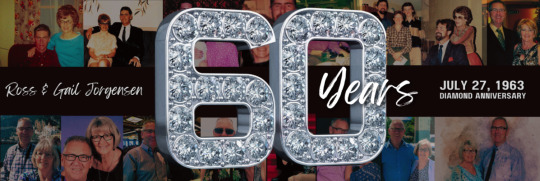
View On WordPress
#1963#2023#60th Annivesary#Alberta#book of memories#British Columbia#congratulations#Danielle Smith#David Eby#Diamond Anniversary#Gail Jorgensen#Governor General of Canada#Greetings#July 26#July 27#Justin Trudeau#King Charles III#letters#Lieutenant Governor#Mary Simon#photos#postcards#premier#Prime Minister of Canada#Queen Camilla#Ross Jorgensen#Saskacthewan#Shawn Jorgensen#Wedding anniversary
0 notes
Text
Meghan Markle is not a feminist. She's a thief and a succubus who uses weak men to create her career opportunities because she lacks the talent and self-respect to do it without their help.
Flashback from the Megxit Files: In January of 2020 she ran a social media campaign to generate interest in Sparry serving as Governor General of Canada. She was on a mission to become a "First Lady."
January 10, 2020: "It's true- 61% of those polled would like H to become the GG and he and Meg and Archie can live in Rideau Hall. GG is paid nearly $300,000 annually, but I would expect them to donate that since they don't need the money."
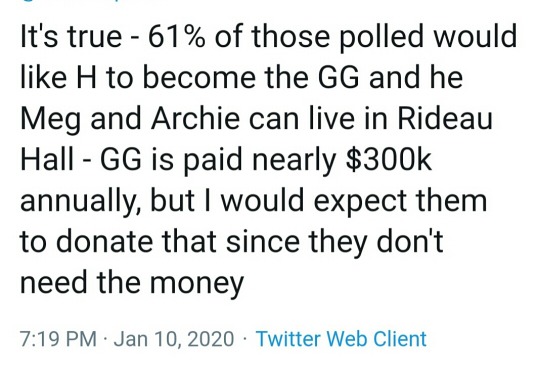
She likes us to know it's HER :
"H" "Meg" "$300,000" salary, and the housing told us she was the author of these communications. She even expressed anger when people pushed back on her plans.
#megxit#canada#don't do drugs kids#get off the drugs#governor general#Sparry#the meghans#Commonwealth plan
46 notes
·
View notes
Text















Former Governor General Lord Stanley pledged to donate a silver challenge cup as an award for the best hockey team in Canada on March 18, 1892. It was later named after him as the Stanley Cup.
#Wayne Gretzky by John Weaver#Edmonton#Alberta#Sir Frederick Arthur Stanley#Lord Stanley Memorial Monument by Sydney March#Stanley Cup by Covit_Nguyen_NORR#Governor General Lord Stanley#donate#silver challenge cup#Stanley Cup#18 March 1892#anniversary#Canadian history#Stanley Park#Vancouver#Canada#original photography#Toronto#Ontario#British Columbia#International Hockey Hall of Fame#travel#vacation#tourist attraction#landmark#Lord Stanley Cup#Ottawa#cityscape#architecture#the real and only Stanley Cup!
0 notes
Text

(Nelson, B.C.) FortisBC this day is having a claim on our Web with regards and respect towards finding new motivations with our Energy Capitol, that having been said, the quotas are ever increasing with regards to that of the Wind and those that have taken time nor space with having sent people looking for ways to track and trace the patterns found with that of solar gusts.

Risk, Solar Flare causing 'Rolling' Radio (CRTC+) across the Globe est. 2013A.D.
#FortisBC#GOV+BC+CANADA#MND#MOD#GCHQ#SupremeCourtUK#Governor General of Crown Copyright#a100d+#dictionary
0 notes
Text
What Canada really needs is senate reform!

All of the major political parties have scuffed policies when it comes to the senate!
For example, the NDP and Bloc want to abolish it, the Liberals want to appoint liberals disguised as independents to the senate, and the Conservatives want it to be business as usual while they appoint "conservatives" to be senators.
Canada's upper house is based off of the UK's House of Lords but why must we take the bad aspects of it?
Canadian's deserve a senate that is:
Of the people
By the people
For the people
Canada needs an elected senate!
#senate#canada#canada first#upper house#elected#electoral reform#Proportional Representation#first past the post#elected senate#appointed#appointment#governor general#cdnpoli#cadpoli#ndp#bloc party#Bloc Quebecois#Liberal#conservatives#ppc#green party#senate reform#reformation#democracy#for the people#architecture#populism#citizen assembly#house of lords#SenCA
1 note
·
View note
Text


How wonderful! This is Canada!
#Two amazing humans I have heaps of admiration for#Two First Peoples leaders#Mary Simon#Wab Kinew#Her Excellency The Right Honourable Mary Simon#The Honourable Wab Kinew#Governor General Mary Simon#Governor General Simon#Premier Wab Kinew#Premier Kinew#Governor General of Canada#Governor-General of Canada#Premier of Manitoba#King Charles III Coronation Medal#King Charles III#King of Canada#Vicereine#Vicereine of Canada#Favorite Canadians#Favorite Humans#Canadian Instagram#Canada Chronicles
2 notes
·
View notes
Text

"SEES YEARS OF HARM FROM UNEMPLOYMENT," Toronto Star. March 26, 1934. Page 1. ---- Bessborough Deplores Effect on Youth ---- Vancouver, March 26. - "Unemployment is a curse that, even if it were lifted here and now, would still make its baleful effects felt for many years to come," the governor-general of Canada stated here last night, speaking on behalf of the unemployment service plan by which efforts are made to provide as much voluntary employment as possible.
"It is sad enough," continued Lord Bessborough, "to see those who have worked honorably all their lives suddenly and through no fault of their own deprived of their livelihood, but it is even sadder and more disheartening to watch the havoc unemployment is playing with the younger generation."
#governor general of canada#lord bessborough#vancouver#unemployment#unemployment relief#pressures of the great depression#employment service plan#employment services#great depression in canada#bennett government
0 notes
Text
so Canada's federal election just got bumped up to April 28th, 2025, and you all know what that means. it means yall have to see me make another long-winded post about it.
let's recap: WHY THE ELECTION DATE: APRIL 28, 2025?
Typically, Canada's federal election is hosted on the third Monday of October once every four years. The reason Canada is hosting it in April is because Carney, the new Prime Minister, requested a Dissolution of Parliament. This action can be requested at any point by request of the sitting Prime Minister or by the King of Canada, but cannot go forward without the approval of the sitting Governor General. The Governor General serves as the King's representative within Canada, among a variety of other constitutional duties, and thus oversees the procedure.
WHO ARE THE POLITICAL PARTIES?

Canada's parliament is currently [as of March 2025] occupied by five political parties. There are more than just these five, but these ones are considered the main players in Canadian Politics. ◦ New Democratic Party / Policies & Publications ◦ Bloc Québécois / Policies & Publications [French] ◦ Green Party / Policies & Publications ◦ Liberal Party of Canada / Policies & Publications ◦ Conservative Party of Canada / Policies & Publications
HOW DOES ALL THIS WORK?
I've seen a few comments floating around treating former Prime Minister Trudeau's tag-out with replacement Prime Minister Carney like it was a federal election [it was not] and that it was somehow illegal [it was perfectly legal]. Being America's neighbor has even Canadians confused as to how our own election system operates, so here are the cliff notes: ◦ You are eligible to vote in Canada if you are a Canadian citizen, are 18 years or older, and can prove your identity and address. ◦ Eligible voters can still register to vote at the polling station if they forgot to register in advance. ◦ Eligible voters can vote early on specific days, register for mail-in voting, vote at an Elections Canada office, or vote on election day itself before polling stations close in their respective time zone. ◦ Eligible voters can still vote while incarcerated, homeless, live abroad, or are outside of Canada during the election. ◦ Employers are obligated to give employees three hours off from work to vote. ◦ Federal elections do not utilize automatic ballot-counting machines. If someone's going off about ballot-hacking or interference, they likely haven't voted in a Canadian federal election. From casting ballots to counting, Canadian voting is largely analog. All golf pencils and paper. ◦ Canada does not vote to elect the Prime Minister specifically. There are 343 Ridings [Electoral Districts] across Canada. These correspond with the 343 seats in the House of Commons:


Each riding elects a member of Parliament to represent them in the House of Commons. Each member of Parliament is typically affiliated with a political party, but they can be independent. The party that wins the most seats in the House becomes the prevailing government and that party's leader becomes Prime Minister. ◦ This is not a celebrity contest. Election ballots vary from riding to riding and list the names of the candidates running for Parliament within each individual district. Party leader names only appear if they happen to be the representative for your particular riding. Voters can find out their riding's candidates using the Elections Canada website.
While Canadian elections don't have nearly the same sensationalism as the States, these basics should still give you the knowledge to recognize when someone [or a bot] is trying to manufacture social media outrage or otherwise spew some bullshit. So I'm going to close this all off with this:
Elections are not Team Sports
In the social media era, it can be alarmingly easy to get swept up in hype and spectacle. Canada operates on a multi-party system, sure, but you still need to pay attention and read into to the policies and guarantees each party is dangling in front of you. Don't just leave it to election day vibes. You need to think critically about who you want writing the legislation, and that also means equipping yourself with the awareness to vote strategically. If you live in a riding that's detrimentally attached to a party whose policies conflict with human rights and values, you may need to place your vote in the candidate whose party has the best chance to oust them - even if that party isn't the one you'd personally prefer to vote for.
Be critical, don't get swept away, and please spare a thought for Canada's House Hippo. They've been trending increasingly endangered since the 90's, but thanks to conservation efforts in the late 2010's they've a fighting chance to make a comeback.

#long post#canadian politics#canada federal election#canpol#canadian election 2025#canada#wall of text#politics#house hippo#canada electoral districts#infographics
752 notes
·
View notes
Text
**IMPORTANT**: CANADIANS, PLEASE READ
(non-Canadians, please share)
Okay, since there's no doubt going to be a huge amount of Trumpist misinformation coming our way, and since most provinces don't have a civics curriculum, let me explain to you how our electoral system works.
Canada operates what's known as a Westminster Parliamentary System--essentially identical to the one that the United Kingdom uses. The main feature of such a system is that the branches of government that are responsible for setting policy (known as the executive branch) and for making laws (known as the legislative branch) are one in the same.
Basically, how it works is this: at least once every four years*, the people of Canada get together to elect members to a deliberative body known as the House of Commons**; the HoC currently has 343 seats, with each seat representing a geographical district known as a riding.
When an election is called, the people living in a riding go to their appointed polling places and cast ballots for one of the various candidates vying for the seat. The candidate who wins the most votes wins. You will note that I said the most votes, rather than a majority of votes. If there are three or more candidates vying for the seat, this means that it's possible (indeed common) for a candidate to win even if most people in their riding voted for someone else. This is called First Past the Post, and it's a problem, but every time we have a referendum on whether to change it, the "no" side wins. *grumble*
Anyways, most of the candidates belong to parties. The parties are as follows:
The Liberals: A centrist political party (represented by the colour red), currently headed by Mark Carney. This is the party that is currently in power, and has been for most of the last 10 years.
The Conservatives (also known as the Tories): A right-wing political party (represented by the colour blue), currently headed by Pierre Poilievre. Besides the Liberals, this is the only other party to have formed governments at the federal level in Canada. If you remember Stephen Harper, he was a Tory.
The New Democratic Party (generally known as the NDP): A left-wing political party (represented by the colour orange), currently headed by Jagmeet Singh. Because we're currently in a minority parliament (I will explain what that means in a moment), the Liberals have been dependent on NDP support to pass bills for the last few years, but they have never themselves formed a government at the Federal level.
The Bloc Quebecois: This is a French-Canadian nationalist / separatist political party (represented by the colour light blue) that only runs candidates in Quebec. Currently headed by Yves-Francois Blanchet. They structurally cannot form the government.
The Green Party: An environmentalist political party (represented by the colour...well...green). Currently headed by Elizabeth May and Jonathan Pedneault (they have a "co-leadership" model). They have never had more than 3 seats in the House of Commons.
The People's Party: A far-right political party (represented by the colour purple). Currently headed by Maxime Bernier. They have never had any seats in the house of commons.
There are a lot of smaller parties as well, but as none of them have ever attracted more than a few thousand votes.
Anyways, after the votes have been tallied and the elected representatives--known as Members of Parliament (MPs)--are selected for each riding, then the Governor General*** asks the leader of the party that was in power before the election whether they can still form the government. In general, in order to form the government, a party needs to have enough support not to be immediately defeated on what are called confidence votes--these are particularly important votes in the House of Commons on things like the budget or the government's overall policy direction. If a party can't pass votes on these issues, then they're effectively unable to govern and either one of the parties will be asked to form the government, going in order of priority depending on the number of MPs that each party elected. The leader of the party that forms the government is known as the Prime Minister.
There are a few things to note here. First of all, Canadians do not vote for the Prime Minister directly; they vote for the individual MPs from each party, and the leader of the winning party becomes the Prime Minister by default. That's why Mark Carney was able to become Prime Minister even though the general public never voted for him: the members of the Liberal Party did vote for him, and it's the Liberal Party that is in power right now.
Secondly, the easiest way for a party to be sure that it can pass all votes will be for it to win the majority of the seats in the House of Commons. This is called a majority government, and, for a variety of reasons, is what Canada usually ends up with. Under a majority government, the party can continue to lead without concern until the next regularly scheduled election in four years. On the other hand, it's possible for a party to win the most seats but not a majority, in which case it will generally have to negotiate with some of the smaller parties for continued support. This is called a minority government, and is what we have had under Justin Trudeau since 2019; the Liberals could still govern, even though they no longer controlled the majority of the House of Commons, by agreeing to support NDP priorities like taxpayer-supported dental care and prescription drugs. A minority government can never be certain of its own future: even if there's an agreement between two parties, it can be suspended at any time. If the government in such a situation is defeated on a confidence vote, then either the GG will ask one of the other parties if they can form a government, or more typically, dissolve parliament and call a new election. A minority government can also "defeat" itself, by asking the GG to call a new election. This is known as a snap election, and is what we're in now.
Finally, because of the aforementioned problem with First Past the Post voting, the seat totals in the House of Commons will rarely, if ever, directly reflect the percentage of votes that each party won. In particular, FPTP has a way of magnifying both victories and defeats, such that, in general, the threshold for winning a "majority" government is actually ~40% of the vote. Since I know that this will come up in Trumpist propaganda if it happens again, please note that it's also possible for a party to lose the popular vote and still win the most seats--Trudeau's Liberals actually received fewer votes than the Tories in the 2019 and 2021 elections, but still got to form the government. Yes, it's bullshit, but again, every time we hold a referendum on changing it, people vote "no", so it's the system we have (*grumble*)
Anyways, election day is on April 28th. You can register to vote here. Please ensure that you do so.
________________________________________
*The law says "four years" but the constitution actually allows for five; but this isn't important now.
**There's also a second house, known as the Senate, which, instead of being elected, consists of members who are appointed by the government for terms that last up to mandatory retirement at the age of 75. This effectively allows previous administrations to have influence lasting long after they've been voted out of power. Yes, it's a problem, but it also has substantially less power than the House of Commons and can do little more than modify bills.
***The Governor General (GG) is the King's representative in Canada. This position nominally has a lot of power, but is entirely ceremonial in practice. The GG is appointed once every five years by the King, on the advice of whoever is Prime Minister at the time. Her other duties include cutting ribbons, handing out awards, and reading speeches on policy--known as speeches from the throne--written by the Prime Minister. It is, by all accounts, a pretty sweet gig if you can get it. Right now, the GG is a woman called Mary Simon. You don't know her name because she hasn't done anything scandalous and doesn't affect your life in any way.
498 notes
·
View notes
Text
HALT! Americans seeking to confidently and wrongly explain other countries' politics, and Canadians who failed 6th grade social studies:
Since I've just seen this for like the 20th time today, let's go over real quick some hot topics about the Canadian political system.
Did Prime Minister Trudeau "use the tariffs" as a power-grab to hold onto his seat? No, he did not. PM Trudeau resigned his seat and then agreed to stay on until the Liberal Party of Canada chose a new leader. He abided by the timeline he set, and did not stay a second longer than would have been expected of him under due Canadian process. He is now fini.
Did the New Democratic Party and the Conservative Party initiate a government shutdown? No. The Governor General initiated Parliament being prorogued (which they usually do under the advice of the sitting PM) - which is not remotely the same thing as a USA government shutdown. "Proroguing" parliament is basically hitting a big ol' pause/reset button on any legislative and funding decisions in progress. Everything else in the government continues on as normal. Whether a given Canadian agrees with the current rationale or not, the fact is that Canadian governments do this all the time. The NDP and Conservatives pledged to a future no-confidence vote, which does unseat the current PM - but this is still not the same thing as a government shutdown, and now the situation may change as the PM went ahead and beat them to it by resigning on his own.
Mark Carney is, as of Sunday, Canada's new PM-Designate. Was he (GASP) unelected?! Is this undemocratic?! This one's for the gajillion Americans I've seen spouting this garbage all over social media. Jesus christ no this is not how Canadian democracy works. If you see other Americans saying this, smack them upside the head for me, please and thank-you. Canadians do not elect the individual Prime Minister. In a federal election, you rock up to the booth and are given a ballot listing the MPs (Members of Parliament) for your riding (electoral district) - the idea being that you're voting for a local person who will then go forth and represent your riding's interests in Parliament. Your vote for an MP is also a vote for the political party they are attached to, unless they are an independent. The Prime Minister is elected by the party. Justin Trudeau stepped down as PM, so it is the responsibility of the LPC to elect his successor, and they chose Mark Carney, who won against several other LPC candidates running. No doubt Carney will trigger a general election soon, and the Canadian populace will have the chance to decide whether they like the LPC with Carney at the head any better than they liked the LPC with Trudeau at the head. 4. Are you saying all of this because you're a Liberal Party apologist/Trudeau defender/Carney fan?! No. The Liberal Party of Canada are a bunch of fucking ghouls and it shrivels my very soul that the federal NDP have fucked up every hand they've been dealt since 2015; so our viable choices are "party of fucking ghouls who have been sitting around in a dark room jerking each other's withered tallywhackers for the past century" or "Party who are very open about the fact that they are going to turn around, drop their pants, and sell the whole country to the USA for 50¢ the literal second they're elected." You can hate Canadian politicians or Canada as a country all you like. That said, holy shit, can we not confidently mislabel other countries' politics as 'undemocratic.' It is really, really, CRUCIALLY, FUCKING VITALLY important right now not to accidentally fall ass-first into the American government's strategy of "trying to make Canada look like an undemocratic backwater in need of 'saving'" because that is how the American government sets the stage for invasions of other countries. Please. Do better.
#canada#cdnpoli#politics#trade war#If you have any questions about cdnpoli I'm happy to answer em. drop me an ask!#Just don't...Americansplain Canadian politics to other Americans#OR TO ACTUAL CANADIANS. WHICH HAS HAPPENED TO ME MANY TIMES RECENTLY. GOOD GOD.#I have seen wrong wrong wrong bullshit that shows a fundamental misunderstanding of Canadian politics#coming from people who present themselves as political 'experts' and are very well spoken. So please do not blindly trust American sources#point to Canadian sources when possible#Thank you et merci!!#elly talks politics
494 notes
·
View notes
Text
The Evil Little Hairy Cave People of Europe in Pulp Fiction

From the 1900s to the 1940s, there was a trendy theme in occult and horror stories that the explanation for widespread European legends of fairies, brownies, pixies, leprechauns and other malicious little people, was that they were a hereditary racial memory of the extremely small non-human, hairy stone age original inhabitants of Europe, who still survive well into modern times in caves and barrows below the earth. Envious of being displaced on the surface, these weird creatures, adapted to the darkness of living underground and unable to withstand the sun, still mean mischief and occasionally go out at night to capture someone.... usually an attractive woman....to take to their dark caves for human sacrifice.
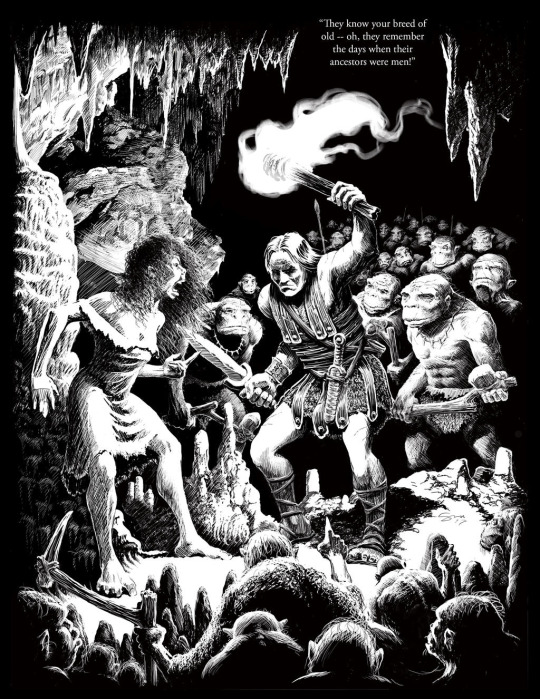
Displaced by the arrival of Indo-European language speakers at the dawn of the Bronze Age, these original, not quite human stone age people of Europe were driven deep underground into caves and barrows below the earth, where they went mad, adapted to the darkness and acquired a fear of daylight, became extremely inbred, in some cases acquired widespread albinism. It is these strange little people who gave the descendants of Europeans a haunting racial dread of places below the earth like mines and caves, and it also is these strange, hairy troglodytes who originally built the uncanny and mysterious menhir, fairy rings, and stone age structures of England, Scotland, and Ireland that predate the coming of the Celts and Romans.
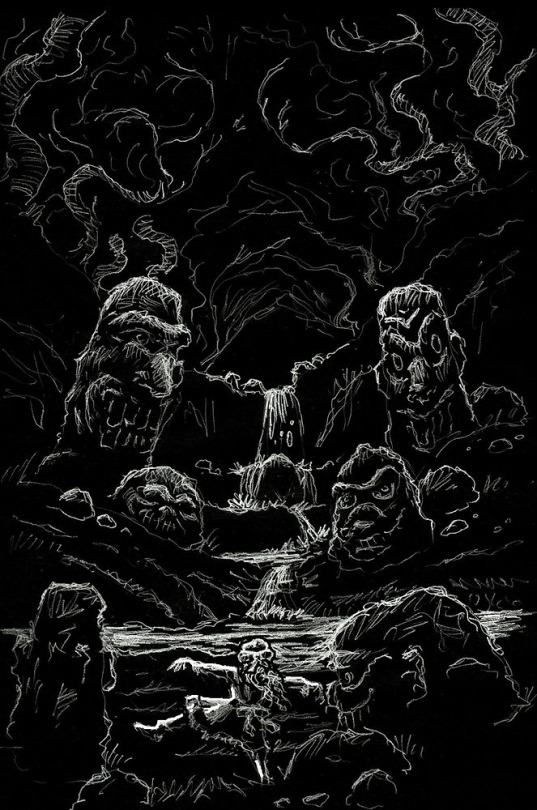
In some cases, these evil troglodytes are usually identified with the mysterious Picts, the pre-Celtic stone age inhabitants of the British Isles. In some cases, they are identified with the Basque people of Spain, best known as the inventors of Jai Alai, and the oldest people in Europe who speak a unique language unrelated to any in the world.
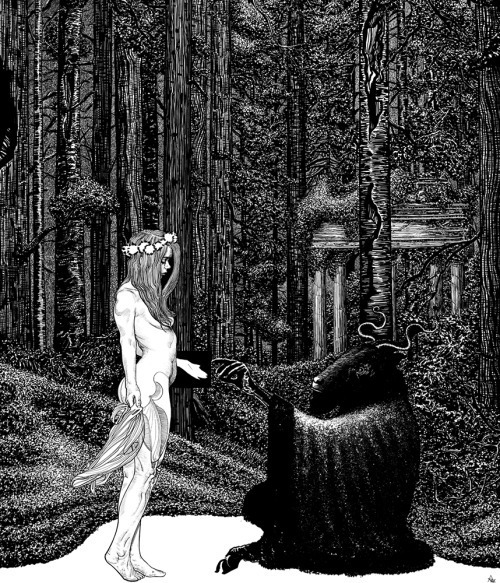
The original codifier of this trend was Arthur Machen, a horror writer who is less remembered than his contemporary, Henry James, but who may be the best horror writer in the generations between Poe on the one end and Lovecraft/CL Moore/Clark Ashton Smith on the other. His story, "the White People" from 1904 (a reference to their strange cave albinism) was a twisted Alice in Wonderland with a girl who is irresistibly attracted to dark pre-Roman stone age ruins and who is eventually pulled underground.
In addition to being a great horror writer, Arthur Machen was a member of the Hermetic Society of the Golden Dawn, an occult organization, and was often seen at the Isis-Urania Temple in London. Many of his works have secretive occult knowledge.
H.P. Lovecraft in particular always pointed out Arthur Machen as his single biggest inspiration, though he combined Machen's dread and occultism with Abraham Merritt's sense of fear of the cosmic unknown, seen in "Dwellers in the Mirage" and "People of the Pit."
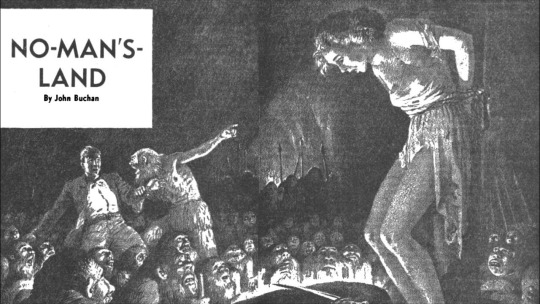
Another and scarier example of this trend would be "No Man's Land," a story by John Buchan, a Scotsman fascinated by paganism and horror, who often wrote stories of horrific discoveries and evil rites on the Scottish moors. He is often reduced to being described as a "Scottish Ghost Story" writer, a painfully reductivist description as in his career, Buchan wrote a lot of thrillers, detective, and adventure stories as well. In later life, he was appointed Governor General of Canada, meaning he may be the first head of state to be a horror writer.
It was Buchan who first identified the cave creatures with the Picts, something that another Weird Tales writer decades later, Robert E. Howard, would roll with in the 1920s.
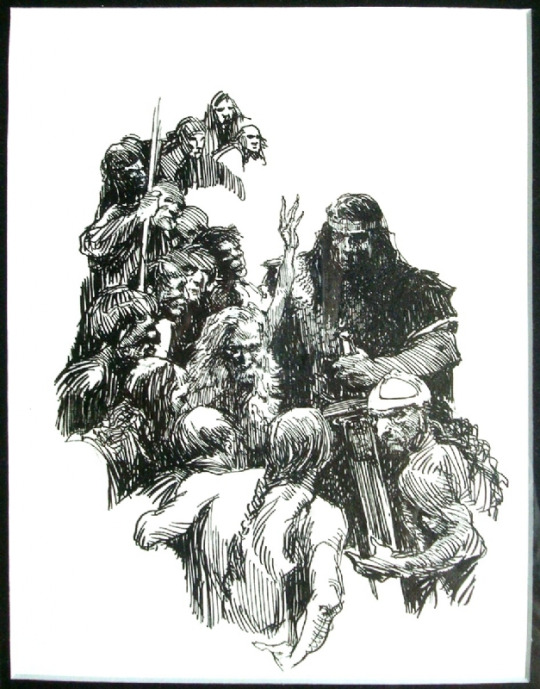
Howard is a very identifiable kind of modern person you often see on the internet: a guy who talks tough, but who was terrified to leave his small town. He created manly man, tough guy heroes like Conan the Barbarian, Kull, and El Borak, but he himself never left his mother's house. It's no wonder he got along well with his fellow Weird Tales writer and weird shut in, HP Lovecraft. With 1920s Weird Tales writers, despite your admiration for their incredible talent, you also can't help but laugh at them a little, a feeling you also apply to a lot of Victorians, who achieved incredible things, but who are often closet cases and cranks who died virgins ("Chinese" Gordon comes to mind, as does Immelmann).
With Howard, his obsession with the Picts and the stone age cave dwelling people of Europe started with an unpublished manuscript where at a dinner party, a man gets knocked out and regresses to his past life in the Bronze Age, where he remembers the earliest contact between modern humans and the original inhabitants of the British Isles, the evil darkskinned Picts. This is a mix of both the "little cave people" story and another cliche at the time, "the stone age past life regression novel," another turn of the century cliche.
Still with the Picts on his mind, Howard would later create Bran Mak Morn, a Pict chieftain, who predated Kull and Conan as his Celtic caveman muscle hero. Howard was of Irish descent and proudly anti-Colonial and anti-British, with his Roman Empire and Civilized Kingdoms as a stand in for the British and other Empires, which he viewed as rapacious and humbug, a view shared by his greatest inspiration, Talbot Mundy. His "Worms of the Earth" gets to the heart of why these little cave people scare us so much: they remind us that we live on land that is impossibly ancient and we don't fully understand at all.
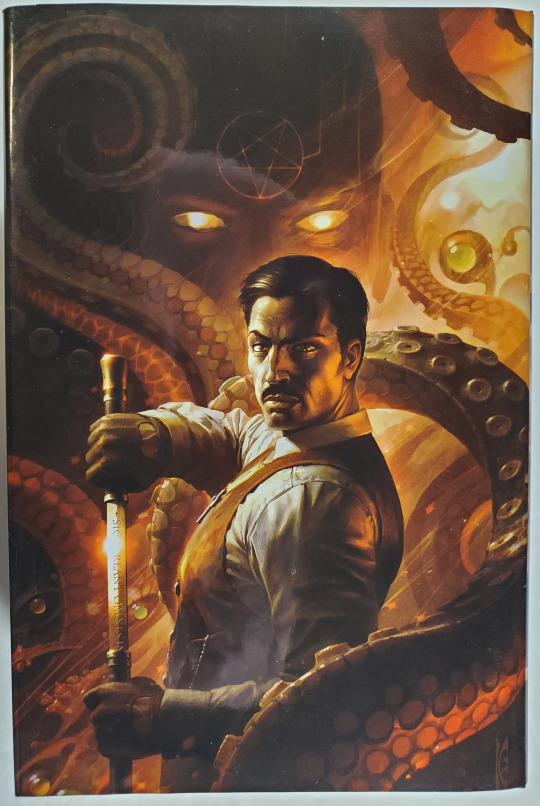
It was another Weird Tales Writer a decade later who wrote one of the last stories about the little hairy cave people of Europe, though, Manly Wade Wellman in 1942. Wellman was mainly known for creating the blond beefcake caveman hero Hok the Mighty set in stone age times, and for his supernatural ghost stories of Silver John the Balladeer set in modern, ghostly Appalachia (like many ex-Weird Tales writers, he made a turn to being a regional author in his later career, in the same way Hugh B. Cave became a Caribbean writer), but Wellman also had a regular character known as John Thunstone, a muscular and wealthy playboy known for his moustache who used his great wealth to investigate the supernatural and the occult. Thunstone had a silver sword made by St. Dunstan, patron of Silversmiths, well known for his confrontations with the Devil.
Most John Thunstone stories featured familiar stories, like a demon possessed seance and so on, but one in particular featured a unique enemy, the Shonokins.
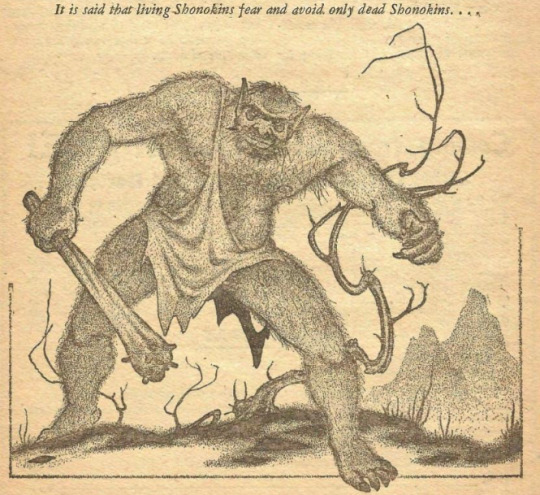
The Shonokins were the original rulers of North America, descendants of Neanderthal man displaced by American Indians. This fear that the land we live is ancient and unknowable and we just arrived on it and don't know any of its secrets is common to settler societies, who often hold the landscape with dread, as in Patricia Wrightson's fantasies of the Australian Outback. It was easy enough to transport the hairy cave people from the Scottish Moors to North America. I suspect that's what they are, a personification of a fear shared in the middle class, that in the back of their minds, that everything they have supposedly earned is merely an accident of history, built by rapacity and the crimes of history, and that someday a bill will come due.
A text page in the May 1942 issue of Weird Tales gives strange additional information on the Shonokins not found elsewhere:
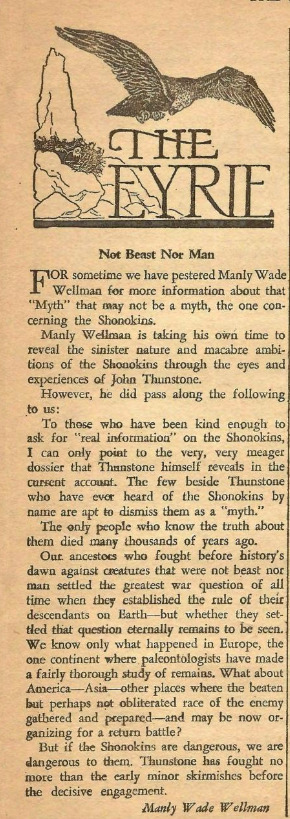
Since then, there have been too many examples of evil cave people who predate Europeans. Philip Jose Farmer's "The All White Elf" features the last survivor of a pre-European people who live in caves. A lot of other fiction of course has featured the Picts, but according to our modern scientific understanding, which describes them as much, much less exotically, as a blue tattooed people not too different and practically indistinguishable from the Celtic tribes that surrounded them, and which they eventually blended into.
458 notes
·
View notes
Text
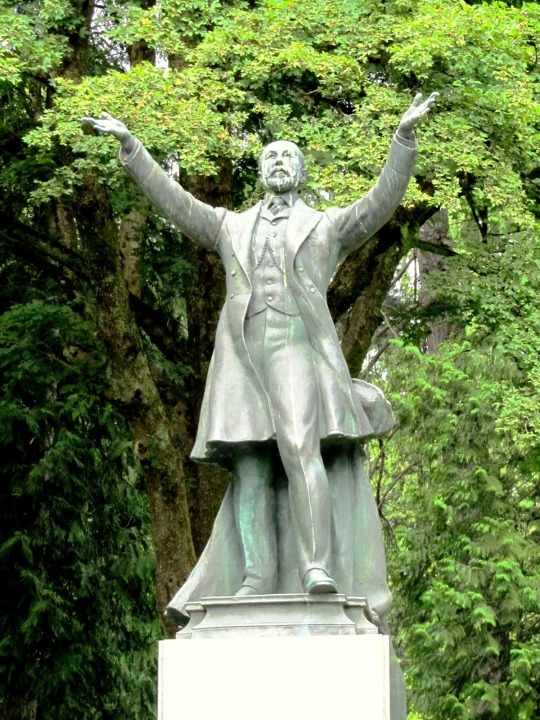
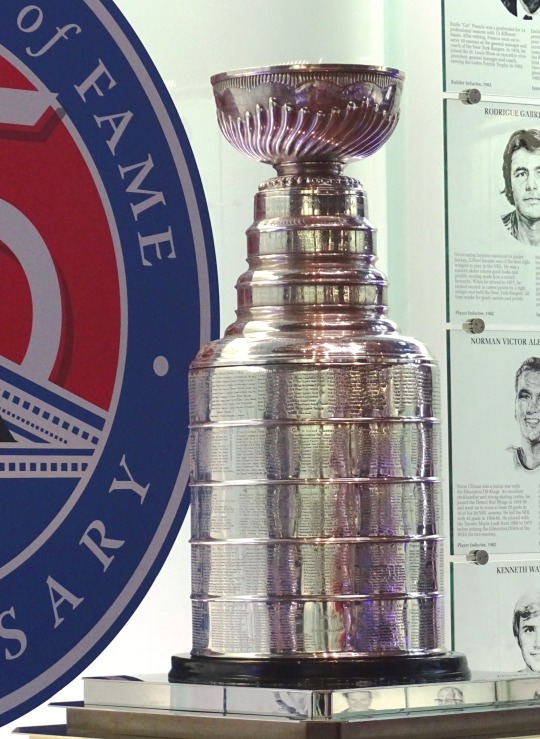

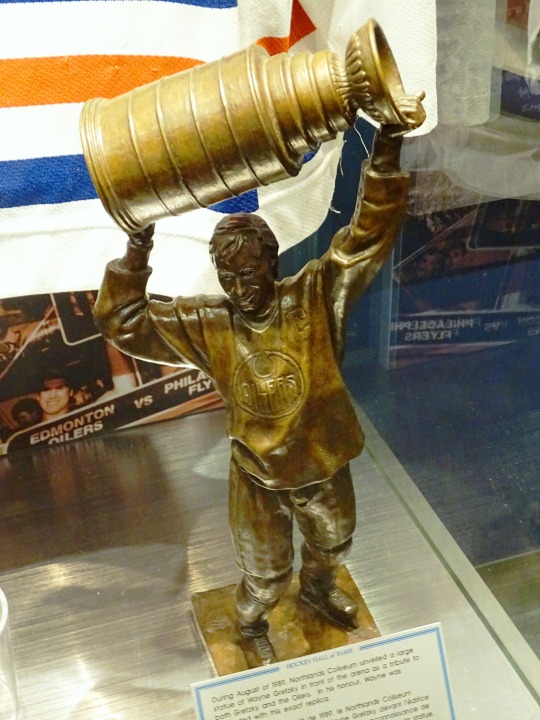
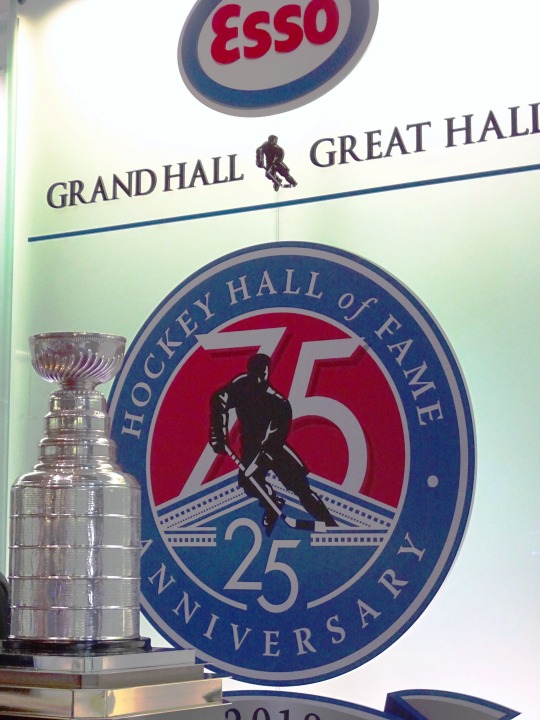
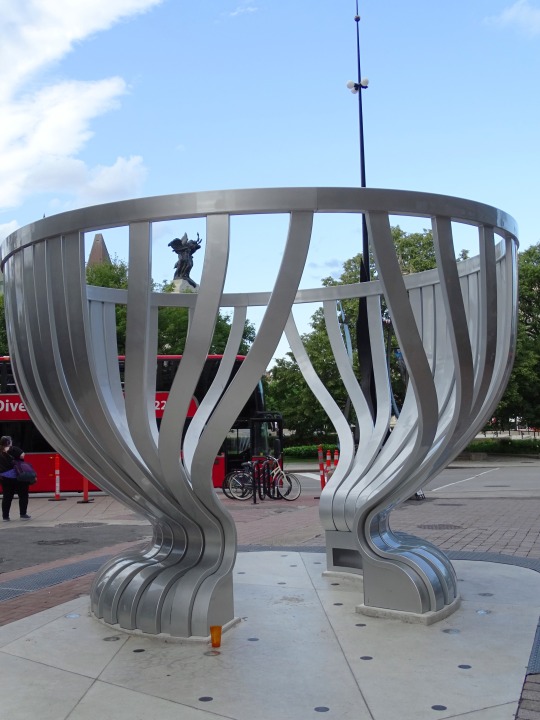
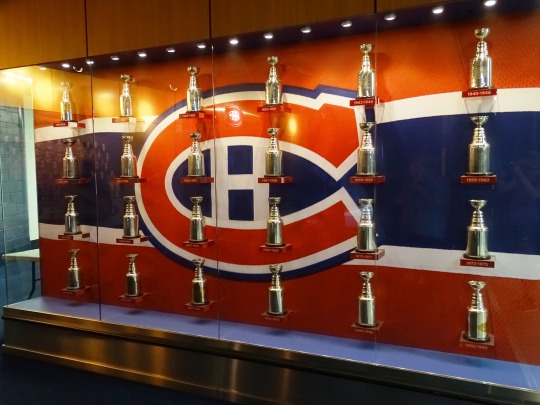
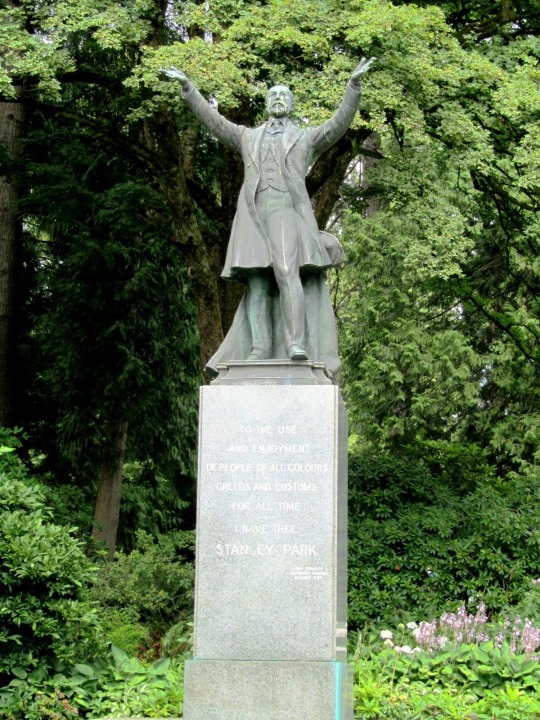
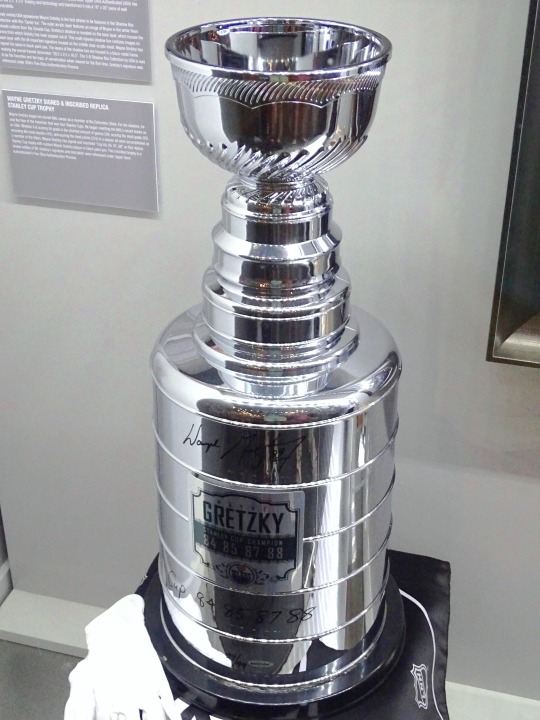
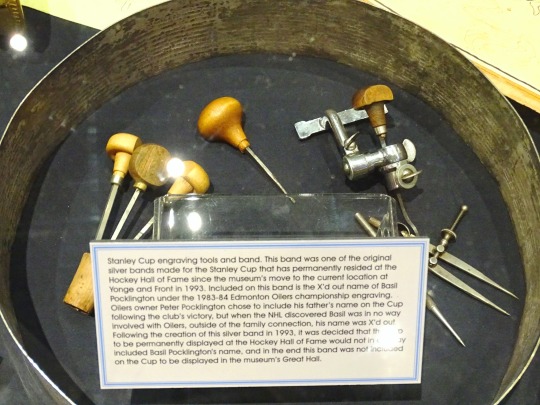
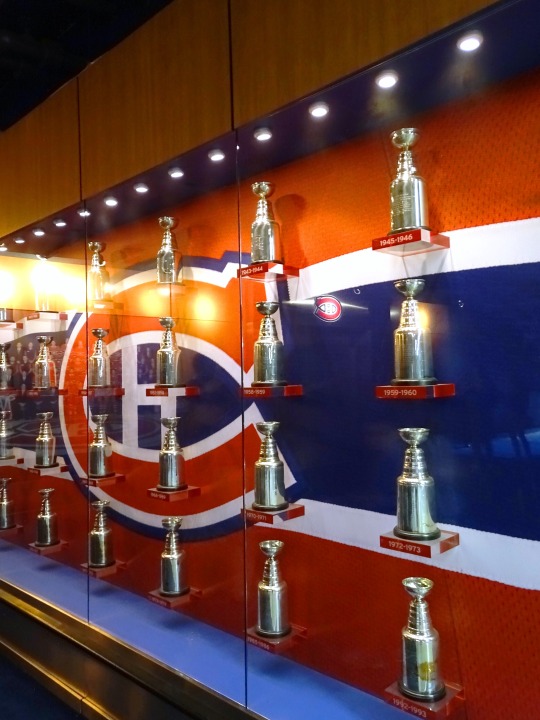
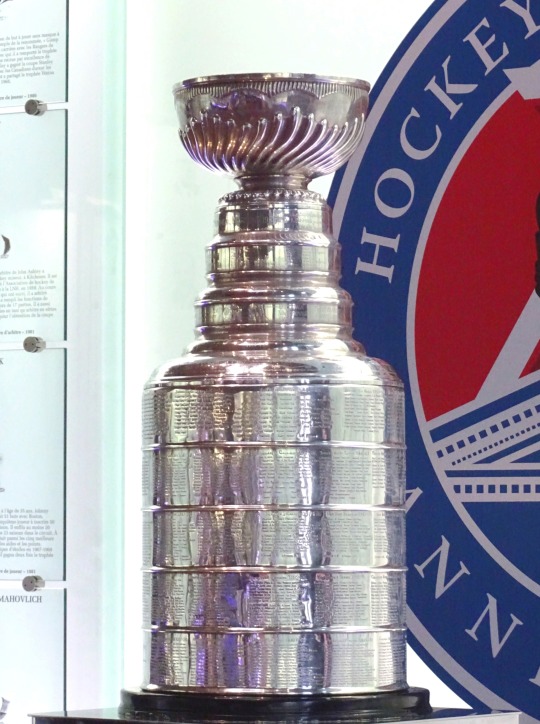
Former Governor General Lord Stanley pledged to donate a silver challenge cup as an award for the best hockey team in Canada on March 18, 1892. It was later named after him as the Stanley Cup.
#Sir Frederick Arthur Stanley#Lord Stanley Memorial Monument by Sydney March#Stanley Cup by Covit_Nguyen_NORR#Governor General Lord Stanley#donate#silver challenge cup#Stanley Cup#18 March 1892#anniversary#Canadian history#Stanley Park#Vancouver#Canada#2012#original photography#Toronto#Ontario#British Columbia#summer 2018#International Hockey Hall of Fame#travel#vacation#tourist attraction#landmark#Lord Stanley Cup#Ottawa#Wayne Gretzky#cityscape#architecture#the real and only Stanley Cup!
0 notes
Photo

Underground Railroad: Pathways to Freedom
The Underground Railroad was a decentralized network of White abolitionists, free Blacks, former slaves, Mexicans, Native Americans, and others opposing slavery in the United States who established secret routes and havens to help slaves escape bondage. The system operated between circa 1780 and 1865, when slavery was abolished by the 13th Amendment.
The Underground Railroad was neither underground nor a railroad, and the origin of the name is debated. It is generally understood to have first appeared in a newspaper article in 1839. The term was defined and explained by the African American abolitionist William M. Mitchell (circa 1826 to circa 1879) in his work, The Underground Railroad from Slavery to Freedom (1860):
A slave, in the State of Kentucky, came to the conclusion that he was not a mere thing, as the law termed him, but a man with immortal destinies in common with other men…He accordingly eloped, and his master followed in hot pursuit to the Ohio River, which divides the slave from the free States; here he lost track of his escaped chattel…Being disappointed, and the loser of a thousand dollars, and having no object on which to vent his dirty spleen, he turned upon the poor Abolitionists, and said, "The d-d Abolitionists must have a railroad under the ground by which they run off niggers." The significant term "underground" emanated from this circumstance…And the means by which the slaves still disappear, like the one just alluded to, beyond the probability of recovery, so suddenly, and with such rapid progress, we very appropriately call a railroad! This is the derivation of the term "Underground Railroad."
(12-13)
Although the Underground Railroad is commonly understood as running from the slave states in the south to the free states in the north and Canada, it also ran south to Spanish Florida and Mexico and west into so-called Indian Territory. Slaves also fled by sea to islands in the Caribbean. The routes north are the best known, owing primarily to the work of the railroad's most famous conductor, Harriet Tubman (circa 1822-1913), the "Father of the Underground Railroad", William Still (1819-1902), and the great abolitionist Frederick Douglass (1818-1895) who operated a 'station' on the railroad.
The number of slaves who used the 'railroad' to escape bondage is unknown, but estimates - based on arrivals documented in Canada, abolitionist records, William Still's The Underground Railroad Records (1872), and similar documents – place the number at around 500,000 by 1865. This number is all the more impressive when one considers the risks taken by all those who participated in refusing to obey unjust laws – such as the Fugitive Slave Act of 1850 – in placing themselves and their families in danger for the sake of others they did not know and, in most cases, would never see again.
Slavery in Colonial America & the USA
Although slavery in colonial America is usually dated to 1619 – when around 20 enslaved Africans arrived at the Jamestown colony of Virginia – these people, though en route to being sold as slaves, were traded to Governor Yeardley (1587-1627) for provisions and were regarded as indentured servants, working for 4-7 years before they were granted their freedom and land. One of these, Anthony Johnson, later had a slave of his own.
The first slaves in colonial America were Native Americans following the Pequot War (1636-1638) when Pequots were sold into slavery in Bermuda, the West Indies, or to farmers in the colony of Massachusetts. Institutionalized chattel slavery of Africans did not begin until 1640 at the Jamestown Colony and was fully institutionalized by the 1660s. By 1700, all of the 13 colonies held slaves, mainly Africans, and the only objection to this practice on record comes from the Quakers of Pennsylvania in 1688, who condemned slavery as immoral and anti-Christian. Quakers would later make up the majority of those who served on the Underground Railroad's northern routes.
Following the American Revolution, the slave trade continued and, in fact, increased as more land was taken from the Native peoples of North America and more free labor was required to work it. There had been slave rebellions prior to the birth of the United States – notably the Stono Rebellion of 1739 – and others afterwards including Gabriel's Rebellion (1800), the 1811 German Coast Uprising, Denmark Vesey's Conspiracy (1822), and Nat Turner's Rebellion (1831), but, usually, slaves chose to escape bondage on their own or in small groups and, in this, they were sometimes – though not always – assisted by the Underground Railroad.
Read More
⇒ Underground Railroad: Pathways to Freedom
58 notes
·
View notes
Text
Keep the US Postal Service Independent
Trump is planning to take control of the United States Postal Service after firing the entire Postal Board and placing the agency under the control of the Commerce Department. The Postal Board of Governors cannot be legally dismissed without cause, and Trump’s attempt to override the system is an illegal takeover that threatens mail-in voting, veterans’ jobs, and the public’s ability to receive affordable mail service. This comes just days after Postmaster General Louis DeJoy announced his resignation following five controversial years at the agency. The USPS is mandated to provide affordable service to every zip code, but privatization could result in significant price hikes, post office closures, and slower mail—especially in rural areas.
Beyond delivering mail, USPS is also one of the largest employers in the country, with over 635,000 workers—including nearly 100,000 military members and veterans in its workforce. Privatization would put these jobs at risk.
Congress must act now to prevent this blatant power grab and ensure the USPS remains independent, affordable, and accessible to all Americans.
Call TOOLS:
Call(Most important, but if you can do the other two):
Fax:
Email if you can:
https://www.senate.gov/states/statesmap.htm
#usa politics#us politics#anti donald trump#stop trump#stop donald trump#anti trump#fuck trump#fuck donald trump#never trump#stop project 2025#fuck project 2025#save democracy#us senate#lgbtq+#civil rights#american politics#hr 9495#aclu#stop internet censorship#fight for the future#stop bad bills#american civil liberties union#tags for visibility#signal boost#please spread#please support#please reblog#urgent#very important!#important
66 notes
·
View notes